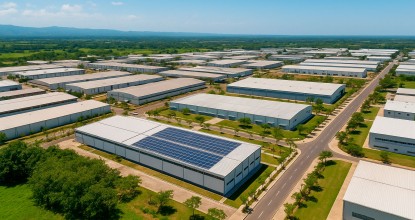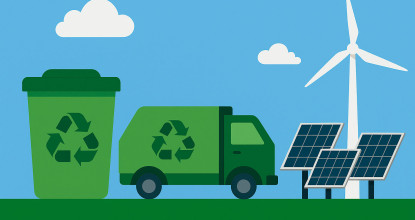In the competitive world of global manufacturing, infrastructure and innovation are two pillars that determine long-term success. At CODEVI, these elements go hand in hand. What started in 2002 as a pioneering industrial project in Ouanaminthe, Haiti, has grown into a world-class industrial park that combines modern infrastructure with a forward-thinking approach to sustainable development and technological progress.
A Masterplan Built for Growth
CODEVI’s evolution is not accidental. It is the result of a master-planned vision designed to scale strategically. From its initial two facilities in 2003, the park now encompasses over 6 million square feet and more than 30 operational buildings. Each structure is designed to meet international standards of safety, functionality, and sustainability.
With ample space for continued expansion and built-in adaptability, CODEVI is poised to support new sectors, from advanced textiles to specialized manufacturing and logistics.
Smart Infrastructure for Modern Manufacturing
CODEVI’s buildings are more than industrial shells. They are smart, integrated facilities equipped with:
- Redundant power systems and solar lighting
- Ergonomic design for worker efficiency and safety
- Compliance with international fire and structural safety codes
- Technological integration for streamlined operations
The park’s layout also facilitates efficient logistics, including internal transport corridors, warehousing, and access to external shipping routes. This makes it ideal for companies seeking fast, agile supply chains.
Energy Strategy: Building a Sustainable Backbone
Infrastructure without energy efficiency is incomplete. That’s why CODEVI incorporates renewable energy into its masterplan. Through initiatives like the Bright Horizon solar lighting project, the park has installed 300 solar-powered lights across 11.8 kilometers, enhancing security while reducing reliance on fossil fuels.
Future plans include increasing solar energy capacity beyond 1.5 megawatts, supporting both environmental targets and cost control for tenants.
Water Management and Waste Reduction
CODEVI leads by example in sustainable resource management. The park has successfully reduced its per capita water use to 12.07 gallons per day, far below the World Health Organization’s average of 16.5 gallons.
At the same time, its waste processing facility, Carplar, recycles plastics, cardboard, and metals. Organic waste is converted into compost used within the park and in surrounding communities, reducing landfill dependency and closing the loop on resource cycles.
Reforestation and Green Spaces
A distinctive feature of CODEVI is its integration of natural spaces. The park maintains over 330,000 square feet of green areas, offering:
- Reforestation projects
- Landscaped zones for employee well-being
- Natural buffers that enhance biodiversity and environmental quality
These elements aren’t just decorative—they form part of CODEVI’s larger goal of being a model for eco-industrial development.
Sector Diversification and Industrial Resilience
CODEVI’s infrastructure supports a wide range of industries, including:
- Textile and apparel manufacturing
- Healthcare products and protective equipment
- Hospitality textiles
- Warehousing and distribution
This diversification strengthens economic resilience, attracting global brands seeking stability, operational efficiency, and sustainable partnerships.
Digital Readiness and Future-Proofing
Innovation at CODEVI doesn’t stop with physical infrastructure. The park is actively pursuing digital transformation through:
- Data-driven facility management
- IoT-based monitoring for utilities and logistics
- Potential for smart manufacturing integration with tenants
These capabilities position CODEVI to stay ahead of evolving industrial trends and technological shifts.
Vision 2030: Infrastructure for the Next Decade
Looking forward, CODEVI has set ambitious goals under its Vision 2030 roadmap, which includes:
- Expansion of industrial capacity for new global markets
- Achievement of Zero Waste to Landfill
- Deployment of smart energy grids and water systems
- Extension of social services, such as L’Ekol and the Primary Care Center, to support more families
This future-ready outlook ensures that CODEVI remains a leader not only in industrial output but also in innovation, sustainability, and regional impact.
CODEVI proves that infrastructure is more than concrete and steel—it is the foundation for innovation, community well-being, and sustainable growth. As it continues to evolve, CODEVI sets a new benchmark for industrial parks in the Caribbean and beyond. For companies looking to build, grow, and lead with purpose, CODEVI offers not just space, but vision.
With its cutting-edge facilities, environmental leadership, and human-centered design, CODEVI is transforming what it means to manufacture in the 21st century.




